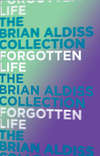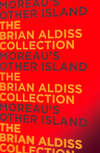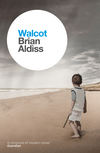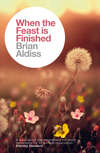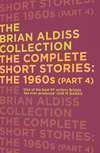Kitabı oku: «Collected Essays», sayfa 8
Kyle’s Pictorial History of Science Fiction (1981), scores slightly better than Lester del Rey’s. It actually manages to mention the title of one of my novels, Barefoot in the Head (‘extravagant if not incomprehensible’). The gain is offset by a veiled threat. The last time anyone said such rough things about Gernsback, we are told, ‘was at the 1952 Chicago con; a fan named Chester A. Polk was sent to hospital and Claude Degler, head of the Cosmic Circle, drove Don Rogers out of fandom for good’.
Alexei Panshin, reviewing BYS in F&SF, also threatened to have me drummed out of the regiment.
Fans like Kyle have had to watch SF taken out of their hands, when once they must have thought it was in their pockets. Well, chums, it belongs to Big Business now, so we’re all losers. The media have taken over—and First Fandom is preferable to the Fourth Estate.
More ambivalent is the attitude of general critics of the field. There’s a feel of punches being pulled. Tom Clareson, in ‘Towards a History of Science Fiction’,[22] evades the issue entirely, with a bland paragraph on Frankenstein which follows on a reference to Asimov’s The Gods Themselves. In James Gunn’s history of SF,[23] he gives BYS a more than friendly nod, but cannot resist delivering the familiar litany of defunct magazines, backed by displays of gaudy covers. Like del Rey, Gunn names none of my fiction; like del Rey he lumps me in with the New Wave, though obviously without malice. In his later four-volumed critical anthology,[24] Gunn—always honest and painstaking—becomes more venturesome; he is a ‘safe’ scholar moving slowly to a more individual, and creative, position.
Clareson and Gunn, like Kyle and Moskowitz, may be regarded honourably as old-timers in the field. Robert Scholes and Eric S. Rabkin, one gathers, are relative newcomers—as their ‘thinking person’s guide to the genre’ demonstrates.[25] This means they cannot reel off litanies of dead stories in dead magazines. It also means they adopt Frankenstein as the progenitor of the species. Hooray! No matter they don’t acknowledge where exactly they derived the idea from. They are genial about BYS, and mention in passing that I have written fiction, though of all my novels only Barefoot in the Head is named. More laziness! Perhaps someone somewhere taught it once. Charles Platt, are you blushing?
All the critical books I have mentioned are quirky, including my own. I am less conscious of quirks in two recent encyclopaedic works, Neil Barron’s Anatomy of Wonder: Science Fiction[26] and the John Clute, Peter Nicholls Encyclopedia of SF,[27] both of which seek to be dispassionate in judgement. Both take cognizance of the range of my work over the last twenty-five years, short stories as well as novels, for which I am grateful.
Clute’s Encyclopaedia is more bulky than The Oxford Companion to English Literature. It is a fact worthy of consideration.
On the whole Billion Year Spree has entered the blood stream. I have gained fewer black marks for it than for my defence of the New Wave writers in England during the 1960s, when I fought for their right to express themselves in their own way rather than in someone else’s. Despite the attempts of persons like del Rey to lump me in with the New Wave, I flourished before it arrived, and continue still to do. That experience taught me how conservative readers of SF are, for all their talk about The Literature of Change. But perhaps the study of SF, virtually non-existent when I began BYS, has brought in a more liberal race of academics; one hopes it is so.
This also must be said. I know, am friendly with, or at least have met, almost all the living writers and critics mentioned in this article. Such is part of the social life of science fiction writers, nor would one have it otherwise. David Kyle I have known since the 1950s—a man who would not set the head of the Cosmic Circle on to me unless I really deserved it. This gregariousness, reinforced by such SF institutions as conventions and fanzines, with their informal critical attitudes, forms a kind of concealed context within which—or against which—most SF writers still exist, long after the collapse of Gernsback’s SF League.
Samuel Delany has pointed to this concealed context, urging formal critics to take note of it.[28] Certainly, I was aware of it when writing BYS, even if I missed it at Lunacon, when it became solid flesh in the form of Sam Moskowitz. My brief here has been to talk of adverse responses to BYS. So I have not talked about the praise it has received in many quarters, outside and inside the SF field. I intended the book to be enjoyed, and rejoiced when it and the Aldiss/Wingrove successor gave enjoyment.
BYS concluded by forecasting a great increase in academic involvement in science fiction. That involvement has developed rapidly, as all can testify. Watching from the sidelines, I see some of the difficulties from which academics suffer.
Humanities departments are under threat in times of recession, in a way that science departments—though themselves not without difficulties—are not. In self-defence, academics in humanities posts write their papers in a form of language which imitates the jargon of their colleagues in the harder sciences. The result is frequently an inviolable form of gobbledegook. An example of what I mean is taken almost randomly from a respected critical journal:
The most serious difficulty with the genre concept comes from the fact that the existence of a particular genre structure (variant) in a given epoch is usually accompanied by literary consciousness of writers, critics, and readers who recognize this structure as different from the synchronic structures of other genres. This intersubjective recognition, depending as it does on the general level of education and culture, on the familiarity of the reading public with traditional and modern literatures, and on the state of criticism in the epoch, is of course, often arbitrary.
While not entirely resisting attempts at divination, these two sentences seem to say little, and say it in an ugly way remote from the graces of our language as she is spoken. A defence mechanism is in operation. To speak plainly is to risk being taken for a fool. Difficulty must be seen to operate in the texts, or else there may be difficulty with grants in the future. SF criticism, being new, is particularly vulnerable to the administrative chopper.
Beneath the tortured language, what is said rarely carries malice. At least not openly. Our boat is still new and not properly tested: it must not be rocked. Thus criticism and its object have come full circle since the eighteenth century. Then, judgements were expressed with clarity and style, and were often designed to wound:
Cibber, write all your verses upon glasses;
So that we may not use them for our——.
1. One thinks here of the scene after Shelley’s death, when Trelawny caused his corpse to be burnt on the shore, Byron and Leigh Hunt also being present. At the last possible moment, Trelawny ran forward and snatched Shelley’s heart from the body.
2. Leonard Woolf, The Annotated Frankenstein, New York, Clarkson N. Potter Inc, 1977.
3. Julian Symons, Bloody Murder, London, Faber and Faber, 1972 (Harmondsworth, Penguin, 1974).
4. Christopher Small, Ariel Like a Harpy, London, Gollancz, 1972.
5. In Literary Women, London, W. H. Allen, 1972.
6. Muriel Spark, Child of Light: A Reassessment of Mary Wollstonecraft Shelley, Hadleigh Bridge, Essex, Tower Bridge Publications, 1951 (revised and published as Mary Shelley, London, Constable, 1988).
7. W. Warren Wagar, Terminal Visions, Bloomington, IN, Indiana University Press, 1982.
8. Percy G. Adams, Travel Literature and the Evolution of the Novel, Lexington, KY, University of Kentucky Press, 1984.
9. William Walling, Mary Shelley, Boston, MA, Twayne, 1972.
10. Mark Adlard, ‘A Labour of Love’, Foundation, 6.
11. Lester del Rey, The World of Science Fiction, New York, Garland Publishing, 1980.
12. An instance is ‘The story’, a scatty review of BYS in Robert Conquest’s The Abomination of Moab, London, Maurice Temple Smith, 1979.
13. Rosemary Jackson, Fantasy: The Literature of Subversion, London, Routledge Chapman and Hall, 1981 (Routledge paperback 1990).
14. Darko Suvin, The Metamorphoses of Science Fiction: On the Poetics and History of a Literary Genre, New Haven, CT, Yale University Press, 1979.
15. In Astounding: John W. Campbell Memorial Anthology, ed. Harry Harrison, New York, Random House, 1973
16. Leonard Woolf, ed., The Annotated Frankenstein, New York, Clarkson N. Potter Inc., 1977.
17. David Ketterer, Frankenstein’s Creation: The Book, The Monster, and Human Reality, Victoria, BC, University of Victoria, 1979.
18. David Ketterer, ‘Frankenstein in Wolf’s Clothing’, in Science Fiction Studies, 18, July 1979.
19. For an impressive and up-to-date confirmation of Mary Shelley’s interest in science, see the long introduction by Marilyn Butler to her edition of Frankenstein, The 1818 Text, London, Pickering and Chatto, 1993.
20. Studies by these three authors are: Christopher Small, Ariel Like a Harpy: Shelley, Mary and Frankenstein, London, Gollancz, 1972; William Veeder, Mary Shelley and Frankenstein: The Fate of Androgyny, Chicago, Chicago University Press, 1986; and Mary K. Patterson Thornburg, The Monster in the Mirror: Gender and the Sentimental/Gothic Myth in Frankenstein, Ann Arbor, MI, UMI Research Publications, 1987
21. Discussed in ‘Since the Enlightenment’, in Brian Aldiss, This World and Nearer Ones, London, Weidenfeld & Nicolson, 1979.
22. In Marshall Tymn, ed., The Science Fiction Reference Book, San Bernardino, CA, Borgo Press, 1981.
23. James Gunn, Alternate Worlds, Englewood Cliffs, NJ, Prentice Hall, 1975
24. James Gunn, The Road to Science Fiction, 4 volumes, New York, New English Library, Mentor, 1977-81.
25. Robert Scholes and Eric S. Rabkin, Science Fiction: History, Science, Vision, London, Oxford University Press, 1977.
26. New York, Bowker, 1976, Fourth Edition, 1995.
27. London, Orbit, Second Edition, 1993. Editors, John Clute & Peter Nicholls.
28. Samuel JR. Delany, ‘Reflections on Historical Models of Modem English Language Science Fiction’, Science Fiction Studies, Vol. 7, Pt. 2, July 1980, reprinted in Starboard Wine, 1984.
Bibliography
Betty T. Bennett, ed., The Letters of Mary Wollstonecraft Shelley, Baltimore, MD, Johns Hopkins Press, 3 vols, 1980–1988.
Betty T. Bennett & Charles E. Robinson, eds., The Mary Shelley Reader, Baltimore, MD, Johns Hopkins Press (Softshell Books), 1990.
Paula R. Feldman & Diana Scott-Kilvert, eds., The Journals of Mary Shelley 1814–1844, Oxford, Oxford University Press, 2 vols, 1987.
Robert Gittings & Jo Manton, Claire Clairmont and the Shelleys 1798–1879, Oxford, Oxford University Press, 1992.
George Levine & U. C. Knoepflmacher, eds., The Endurance of ‘Frankenstein’. Essays on Mary Shelley’s Novel, Berkeley, CA, University of California Press, 1979.
Charles E. Robinson, ed., Mary Shelley: Collected Tales and Stories, Baltimore, MD, Johns Hopkins Press (Softshell Books), 1990.
Mary Shelley, New Introduction by Brian Aldiss, The Last Man, London, The Hogarth Press, 1985.
William St Clair, The Godwins and the Shelleys. The Biography of a Family, New York, W. W. Norton and Co., 1989.
Mary Wollstonecraft, Letters Written during a Short Residence in Sweden, Norway and Denmark, Fontwell, Centaur Press, 1970. Or as A Short Residence in Sweden, Norway & Denmark, Harmondsworth, Penguin Classics, 1987.
Mary Wollstonecraft Shelley, edited with introduction and notes by Marilyn Butler, Frankenstein: or. The Modern Prometheus. The 1818 Text, London, William Pickering, 1993.
STURGEON: THE CRUELTY OF THE GODS
What a battering we took in those first years of reading science fiction! What a pounding and pummelling with the extraordinary, with the extravagant, with the extra-mural! What a sexless time we had of it in those big spaceships thundering through the American void towards planets where just to take one breath—well, I can remember when you simply opened the airlock door and sniffed to see that the air was okay … And if it wasn’t okay, obviously anything could happen, shape-changing being the least of it.
The problems we faced on those planets! The awful creatures we encountered! Not that things were much better on Earth. Even before nuclear war was invented, ruined cities abounded. Plagues were always breaking out, ants were mutating, madmen gabbling strait-jacketed in mental wards proved to be sole possessors of the awful Truth about Earth …
Sometimes, terrible new and ingenious threats were just round the corner, awaiting their moment to burst forth. A twisted millionaire with a power complex was breeding a new species, little creatures who could survive any manner of disaster he brought down on them. And the little creatures were planning to escape and strike back. As a boy, you could not help wondering, awed, what manner of man could dream up such a story. He must be a marvel. Why, there was magic even in his name—Theodore Sturgeon …
There it was, perpetually cropping up attached to the stories I most admired. Sturgeon: quite an ordinary Anglo-American word among exotics like A. E. Van Vogt, Isaac Asimov, Heinlein, Simak and Kuttner. Yet—spiky, finny, odd. And it was not his original name. Theodore Hamilton Sturgeon was born Edward Hamilton Waldo, to the usual boring, undeserving parents. That was on Staten Island, the year the First World War ended.
So there were two of him, as there are of many a good writer. A bright side, a dark side—much like our old SF image of Mercury, remember, so much more interesting than banal reality. He had a mercurial temperament.
The bright side was the side everybody loved. There was something so damned nice, charming, open, empathic and elusive about Ted that women flocked to him. Men too. Maybe he was at the mercy of his own fey sexuality. If so, he was quizzical about it, as about everything. One of his more cutesy titles put it admirably: ‘If All Men Were Brothers, Would you Let One Marry Your Sister?’. Not if it was Sturgeon, said a too-witty friend.
He played his guitar. He sang. He shone. He spoke of his philosophy of love. Ted honestly brought people happiness. If he was funny, it was a genuine humour which sprang from seeing the world aslant. A true SF talent. Everyone recognized his strange quality—’Faunlike’, some nut dubbed it; faunlike he certainly looked. Inexplicable, really.
Unsympathetic father, unsatisfactory adolescence. Funny jobs, and ‘Ether Breather’ out in Astounding in 1939. So to an even funnier job, science fiction writer. It’s flirting with disaster. I could not believe those early stories: curious subject matter, bizarre revolutions, glowing style. And about sexuality. You could hardly believe your luck when one of Ted’s stories went singing through your head.
‘It’, with Cartier illustrations, in Unknown. Terrifying. ‘Derm Fool’. Madness. The magnificent ‘Microcosmic God’, read and re-read. ‘Killdozer’, appearing after a long silence. There were to be other silences. ‘Baby is Three’: again in the sense of utter incredibility with complete conviction, zinging across a reader’s synapses. By a miracle, the blown up version, More Than Human, was no disappointment either. This was Sturgeon’s caviar dish. Better even than Venus Plus X with its outré sexuality in a hermaphrodite utopia.
As for those silences. Something sank Sturgeon. His amazing early success, his popularity with fans and stardom at conventions—they told against the writer. Success is a vampire. In the midst of life we are in definite trouble. They say Sturgeon was the first author in the field ever to sign a six-book contract. A six-book contract was a rare mark of distinction, like being crucified. A mark of extinction. Ted was no stakhanovite and the deal did for him; he was reduced to writing a novelization of a schlock TV series, Voyage to the Bottom of the Sea, to fulfil his norms.
At one time he was reduced further to writing TV plot scripts for Hollywood. He lived in motels or trailers, between marriages, between lives. Those who read The Dreaming Jewels or Venus Plus X or the story collections forget that writing is secretly a heavy load, an endless battle against the disappointments which come from within as well as without—and reputation is a heavier load. Ted was fighting his way back to the light when night came on.
About Ted’s dark side.
Well, he wrote that memorable novel, Some of Your Blood, about this crazy psychotic who goes for drinking menstrual discharge. Actually, it does not taste as bad as Ted made out. That was his bid to escape the inescapable adulation.
Here’s one small human thing he did. He and I, with James Gunn, were conducting the writer’s workshop at the Third Conference of the Fantastic at Boca Raton, Florida.
Our would-be writers circulated their effusions around the table for everyone’s comment. One would-be was a plump, pallid, unhappy lady. Her story was a fantasy about a guy who tried three times to commit suicide, only to be blocked each time by a green monster from Hell who wanted him to keep on suffering. Sounds promising, but the treatment was hopeless.
Dumb comments around the table. I grew impatient with their unreality. When the story reached me, I asked the lady right out, ‘Have you ever tried to commit suicide?’
Unexpected response. She stared at me in shock. Then she burst into a hailstorm of tears, collapsing onto the table. ‘Three times’, she cried. Everyone looked fit to faint.
‘It’s nothing to be ashamed of’, I said. ‘I’ve tried it too.’
‘So have I’, said Sturgeon calmly.
He needn’t have come in like that. He just did it bravely, unostentatiously, to support me, to support her, to support everyone. And there certainly was a lot of misery and disappointment in Ted’s life, for all the affection he generated. Yet he remained kind, loving, giving. (The lady is improving by the way. We kept in touch. That’s another story.)
If that does not strike you as a positive story, I’m sorry. I’m not knocking suicide, either. Everyone should try it at least once.
Ted was a real guy, not an idol, an effigy, as some try to paint him. He was brilliant, so he suffered. I know beyond doubt that he would be pleased to see me set down some of the bad times he had. He was not one to edit things out. Otherwise he would have been a less powerful writer.
There are troves of lovely Sturgeon tales (as in the collection labelled E Pluribus Unum), like ‘Bianca’s Hands’, which a new generation would delight in. He wrote well, if sometimes overlushly. In many ways, Ted was the direct opposite of the big technophile names of his generation, like Doc Smith, Poul Anderson, Robert Heinlein et al. His gaze was more closely fixed on people. For that we honoured him, and still honour him. Good for him, that he never ended up in that prick’s junkyard where they pay you a million dollars’ advance for some crud that no sane man wants to read.
Ted died early in May 1985 in Oregon, of pneumonia and other complications. Now he consorts with Sophocles, Phil Dick, and the author of the Kama Sutra. He had returned from a holiday in Hawaii, taken in the hopes he might recover his health there. That holiday, incidentally, was paid for by another SF writer—one who often gets publicity for the wrong things. Thank God, there are still some good guys left. We are also duly grateful for the one just departed.
Of course, Sturgeon had his faults, but at his best his turn of phrase, his twist of mind, should have made him a widely admired name in American letters. A story like ‘When You’re Smiling’, which appeared in Galaxy in the 1950s, is beautiful and brutal, spiked with psychological understanding. It’s the old conundrum, posed every day to those of us who love SF: why doesn’t everyone recognize its sterling virtues?
So Ted slowly went into eclipse—not that that is not often the fate also of better-known writers. He showed up at one of Harry Harrison’s Dublin conferences in the late 1970s with a charming lady in tow. He addressed me in these words, ‘Hey, Brian, you and I are the best ever SF writers, why don’t we get together and write the best ever novel? Why don’t I come back to your place for a coupla months, settle in and work with you?’
A hundred reasons for saying no leapt immediately to mind.
Now there’s a Sturgeon Project,[1] aiming at returning all of Sturgeon’s stories to print. In 1993, the project published Argyll, an eighty-page booklet. It is Ted’s tragic story of his relationship with his step-father. Samuel R. Delany, in a well meaning afterword, compared Argyll with Kafka’s Letter to His Father. That’s a mistake. Kafka’s profound document adds to our understanding of human nature. Whereas Ted Sturgeon’s piece, though of great interest, is just a self-pitying account of a man’s cruelty to a small boy, a persecution of the almost helpless.
At least it tells us where ‘Microcosmic God’ came from.
1. For more information, write to The Sturgeon Project, c/o Paul Williams, Box 611, Glen Ellen, CA 95442, USA.





